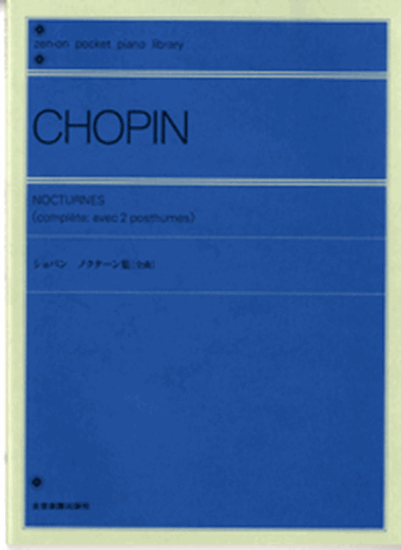Chopin, Frederic : Nocturne No.14 fis-moll Op.48-2
Work Overview
Genre:nocturne
Total Playing Time:6 min 00 sec
Copyright:Public Domain
Commentary (1)
Author : Ueda, Yasushi
Last Updated: January 1, 2010
[Open]
Author : Ueda, Yasushi
Deux Nocturnes Op.48
The composition period of these two nocturnes varies among researchers, but they were composed in 1840 or 1841, and the first editions were published in Paris (M. Schlesinger, 1841), Leipzig (Breitkopf und Härtel, 1842), and London (Wessel & Stapleton, 1842). Dedicated to his pupil, Mademoiselle Laure Duperré. Autograph manuscripts have not been found. Both works are masterpieces that strongly reflect the influence of opera.
No. 14 in F-sharp minor
No. 14, like No. 13, consists of three sections (hereafter A, B, A'), and its operatic characteristics are prominent. After a brief introduction that hovers between F-sharp major, F-sharp minor, and C-sharp major, a serenade-like melody is played over a left-hand figuration reminiscent of guitar strumming. The theme is repeated as usual, with variations added through octaves and ornamentation.
After the serenade concludes, section B enters in A-flat major, marked "Molto più lento." Here, a recitative-like figuration, expressed by quintuplets and sextuplets, is introduced. Such treatment is unprecedented in Chopin's nocturnes. The "recitative" is likely carried by a tenor voice, considering its range. Chopin himself, while giving a lesson to his favorite pupil and friend, A. Gutmann, reportedly told him to play this middle section "like a recitative," adding, "The tyrant gives orders (this was the meaning of the first two chords), and the other begs for mercy." This is Gutmann's testimony.
In A', the opening serenade-like melody returns, but in the coda, chromatically progressing harmonies drive the melody downwards, pushing it to the lowest note of the "serenade," C-sharp. Then, in the final two measures, it suddenly ascends to the highest note, A-sharp, concluding the piece in F-sharp major.
¹ Jean-Jacques Eigeldinger, Chopin vu par ses élèves: sa pédagogie, son esthétique de l'interprétation (3rd ed., Neuchâtel, 1988), translated by Jiro Yoneya and Koji Nakajima, Tokyo: Ongaku no Tomo Sha, 2005.
PTNA & Partner Channel Videos(1items)
Sheet Music
Scores List (14)

(株)全音楽譜出版社

(株)全音楽譜出版社

ハンナ(ショパン)

ハンナ(ショパン)

(株)ドレミ楽譜出版社

(株)音楽之友社

(株)全音楽譜出版社

(株)音楽之友社

(株)全音楽譜出版社

(株)全音楽譜出版社

(株)全音楽譜出版社

ポーランド音楽出版社

(株)ヤマハミュージックエンタテインメントホールディングス

(株)音楽之友社

 第14番 - 演奏動画のサムネイル](http://i.ytimg.com/vi/f0IjuyAzBaQ/mqdefault.jpg)
